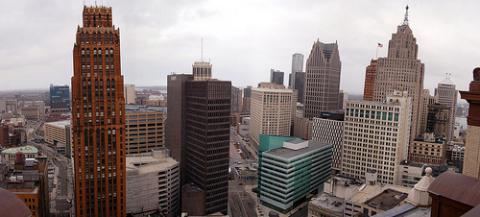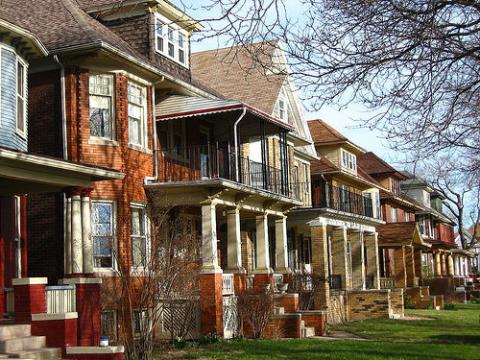Updated December 2017
Incorporated as a city in 1815, Detroit quickly experienced significant growth thanks to its location along the Great Lakes waterway, which made it an ideal port and transportation hub. Between 1920 and 1930—thanks to the city becoming home to the thriving automobile industry—Detroit’s population more than doubled, increasing from 465,766 to 993,678 residents. At its peak in 1950, the city had nearly 1.85 million inhabitants.
The decline of Detroit’s manufacturing base, especially of its automakers and auto parts suppliers, has led to significant population loss and well as high rates of poverty and vacant properties. Most recently, the city came to national attention when in July 2013 it becoming the largest U.S. city to file for bankruptcy.
With an estimated 2016 population of 672,795, Detroit has lost more people than any other large city over the past 60 years. As of the most recent Census, the remaining residents were 83 percent black, 11 percent white, and 7 percent Hispanic.
Poverty is a significant challenge in Detroit. As of 2016, well above one-third of all city residents (36 percent) were living in poverty, the highest rate among the nation’s largest cities. However, the level of socio-economic distress seems to be on the decline as this is down from the nearly 40 percent of all city residents living in poverty in 2015. Similarly, while the unemployment rate among Detroit residents is more than double that of the state of Michigan (8.4 percent vs. 3.7 percent, respectively), it is well below its peak of 28 percent in 2009.
Helping to affect positive change are a range of community wealth building organizations. For example, in the Brightmoor community, Northwest Detroit Neighborhood Development has constructed roughly 300 affordable homes, a third of which include supportive services for families with special needs. The CDC is now raising funds to build 90 affordable homes, renovate a building into community and nonprofit office space, and develop a mixed-use project with 200 units of housing. On the Lower Eastside, Eastside Community Network has helped catalyze new community resources including four locally-owned restaurants, a community development bank, a credit union, two health clinics, and green infrastructure.
Another nonprofit working to boost community wealth is the Detroit Economic Growth Corporation, which focuses on designing and implementing public and private sector collaborations that drive investment, create jobs, and advance Detroit’s economy. In 2015, the nonprofit’s work helped small Detroit construction companies access projects totaling $228.5 million and persuaded 18 large buying organizations to commit $856 million to local purchasing.
Following the city’s economic crisis, Detroit’s philanthropic community highlighted its commitment to the region through the New Economy Initiative (NEI), an effort led by the Community Foundation for Southeastern Michigan that combined investments from 10 foundations into a $100 million fund to diversify the economy and stimulate entrepreneurial development. Since 2009, NEI has awarded over $96 million to projects credited with creating 1,610 new companies and adding nearly 17,500 new jobs in the region. To ensure NEI’s continuation, funders added $33.25 million to the effort in 2013.
An overview of these and other exemplary community wealth building efforts follows:

